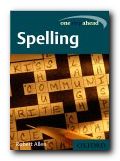all the Bard’s smut, indecency, and suggestiveness
Eric Partridge was a maverick, self-taught Australian lexicographer. In addition to scholarly work on grammar and linguistics, he specialised in slang, swearing, and the colourful language of everyday life. In this classic work from 1941 he combines a study of ‘rude language’ with a scholarly reading of Shakespeare. The result in Shakespeare’s Bawdy is a marvellous compilation of Shakespeare’s linguistic inventiveness and an in-depth study of imagery, allusion, innuendo, and metaphor. Structurally, the book is composed in its first part of introductory essays on sexual, homosexual, and general bawdy; and then in its second part a major glossary of terms, with quoted examples from the plays and poetry.
 Partridge assumes that all the opinion, references, and allusions represent Shakespeare’s own personal opinion, rather than that of the characters who express them. This is an approach which many today would take to be critically naive. But I don’t think this matters too much. Most people reading the book will be delighted with Partridge’s learned swashbuckling style, grateful for his scholarship, and amused by the plethora of examples he explores. Here’s a typical example which illustrates both the scholarly detail and the amazing density of the sexual reference he uncovers:
Partridge assumes that all the opinion, references, and allusions represent Shakespeare’s own personal opinion, rather than that of the characters who express them. This is an approach which many today would take to be critically naive. But I don’t think this matters too much. Most people reading the book will be delighted with Partridge’s learned swashbuckling style, grateful for his scholarship, and amused by the plethora of examples he explores. Here’s a typical example which illustrates both the scholarly detail and the amazing density of the sexual reference he uncovers:
boat hath a leak, her. To Edgar’s Come o’er the bourne, Bessy, to me’, the Fool adds, ‘Her boat hath a leak And she must not speak Why she doth not come over to thee’ (Lear, III vi 25-28). Perhaps, ‘she is having her period’, but probably ‘she is suffering from gonorrhoea’. (Cf. leaky.)
The boat may be the female body (cf. carrack), a rich prize that a man is ready to board; or it may, by a shape-allusion, be the female pudend.
This is a linguistic register in which innocent words such as ‘neck’ and ‘nose’ are used to imply sexual body parts, and even the pronunciation of the single letter ‘n’ may be used suggestively. What the majority of these entries reveal however is not simply the sauciness and ribaldry of Shakespeare’s language, but his amazing power of coining metaphors and the spectacular profundity of his imagination.
This is one of the first volumes in Routledge’s re-issue of books which have established themselves as classics. They are now available for those who missed them first time round, and for a younger generation for whom the authors are just frequently-cited names in bibliographies.
Because they have now acquired the status of ‘set texts’, the current editions have been given introductions, prefaces, and notes which place them in historical context and offer a scholarly apparatus which make them even more valuable than their original editions.
All Partridge’s books are a joy to read, and this is no exception. This is a handsomely produced book – well designed and printed, and very good value at the price. It’s a series which deserves to prosper.
© Roy Johnson 2002
Eric Partridge, Shakespeare’s Bawdy, London: Routledge Classics, 2001, pp.291, ISBN: 0415254000
